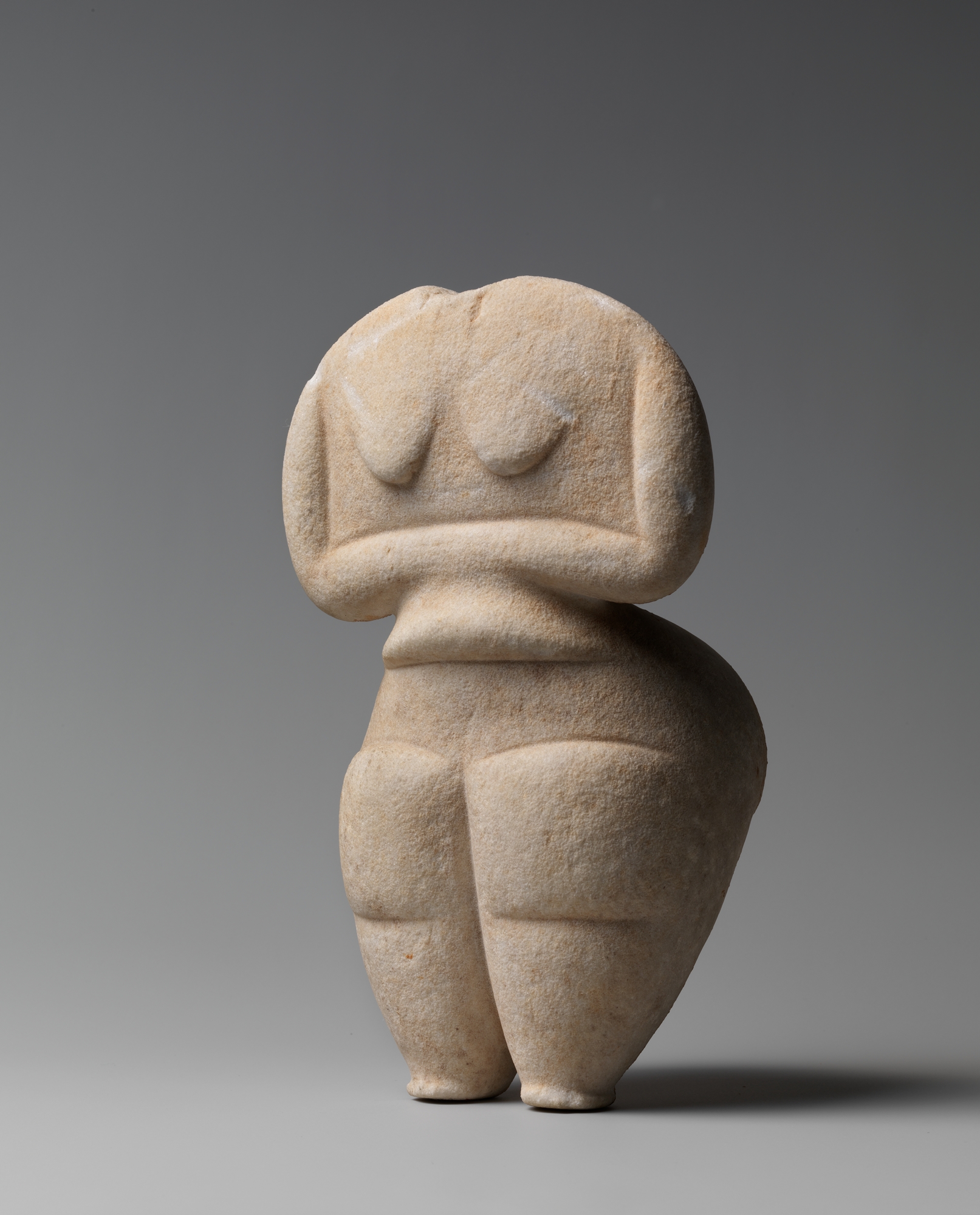When I saw this sculpture for the first time, I thought it looked like a very interesting piece of modern art. But guess what, it was created circa 4500 to 4000 BCE!!!! Amazing, isn't it?
The figure represents a rare type known as steatopygous, characterized by particularly full legs and buttocks, and is undoubtedly indicative of fertility. The ancient Cycladic culture flourished in the islands of the Aegean Sea from c. 3300 to 1100 BCE. Along with the Minoan civilization and Mycenaean Greece, the Cycladic people are counted among the three major Aegean cultures. Cycladic art therefore comprises one of the three main branches of Aegean art.
The best known type of artwork that has survived is the marble figurine, most commonly a single full-length female figure with arms folded across the front. The type is known to archaeologists as a folded-arm figure(ine) (FAF). Apart from a sharply defined nose, the faces are a smooth blank, although there is evidence on some that they were originally painted. Considerable numbers of these are known, though unfortunately most were removed illicitly from their unrecorded archaeological context, which seems usually to be a burial.
P.S. Here you will find other amazing Cycladic figurines and learn more about them!


 Unknown Artist
Unknown Artist